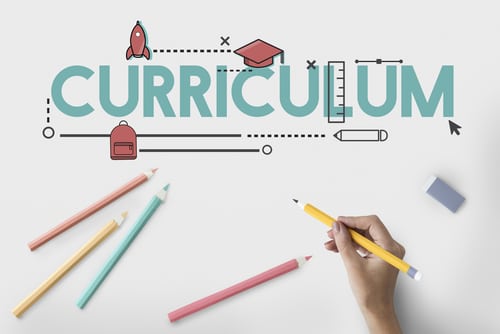When developing quality curriculum, clearly articulated goals and objectives are the key to success. Understanding what students should learn each school year and course allows curriculum designers to plan effectively for day-to-day learning as well as for long-term learning, such as over the course of a school year, K-12 experience, or degree program.
Common Definitions
Goals are the broad, general statements that indicate desired long-term outcomes. Standardizing goals, such as with state standards or governing body standards, ensures that all students are prepared for their next stage of learning or life, regardless of teacher or school. Goals are designed to be met by all students after they complete a full course or grade level.
Objectives are the specific, measurable expectations that indicate what students should be able to know or do as they work toward a curriculum goal. They can be described through what students are expected to learn (learning outcomes), what students will produce through a learning experience (learning products or learning performance), or what students will do (learning activity).
Constructing Effective Goals
- What is the scope of the goal? Goals can encompass a semester, a year, multiple years, entire disciplines, or a whole program. Before choosing a goal, think about the time the students will have to reach it. For example, developing a goal for a class that meets for an hour a week should look very different than developing a goal for a daily math class.
- What is the type of goal? Goals can cover a skill, behavior, or piece of knowledge. Take this variety of goals as an example:
- Students will read grade-level books with comprehension.
- Students will take useful notes.
- Students will understand the causes and effects of World War I.
Constructing Effective Objectives
- What steps will lead to the goal? Objectives must be seen as steps to reaching the ultimate goal. For example, if the goal is to read grade level books with comprehension, then you would need to plan objectives involving decoding, vocabulary, and comprehension skills. Mapping out your objectives according to the ultimate goal will help structure learning effectively.
- How will students show their understanding of the objective? Students will need to demonstrate their understanding of the objective. They may need to produce a product, such as a paragraph or drawing. Other options for showing understanding might be class discussions, formative assessments, or applying skills to solve a problem.
- Do the objectives vary in depth of knowledge and time of mastery? When designing learning objectives, curriculum developers should take into account Webb’s Depth of Knowledge levels. This way, students will be able to extend their understanding from recall to predicting to designing to writing. Developers should also vary the time it takes to meet each objective so that students create both long-term and short-term learning products.
Using Effective Goals and Objectives
Articulating your goals and mapping out measurable objectives requires a deep understanding of your students and your subject matter. Implementing these goals and objectives can be an even bigger challenge. But keeping them in mind as you plan all of your students’ learning experiences will help all of them reach their learning goals.




